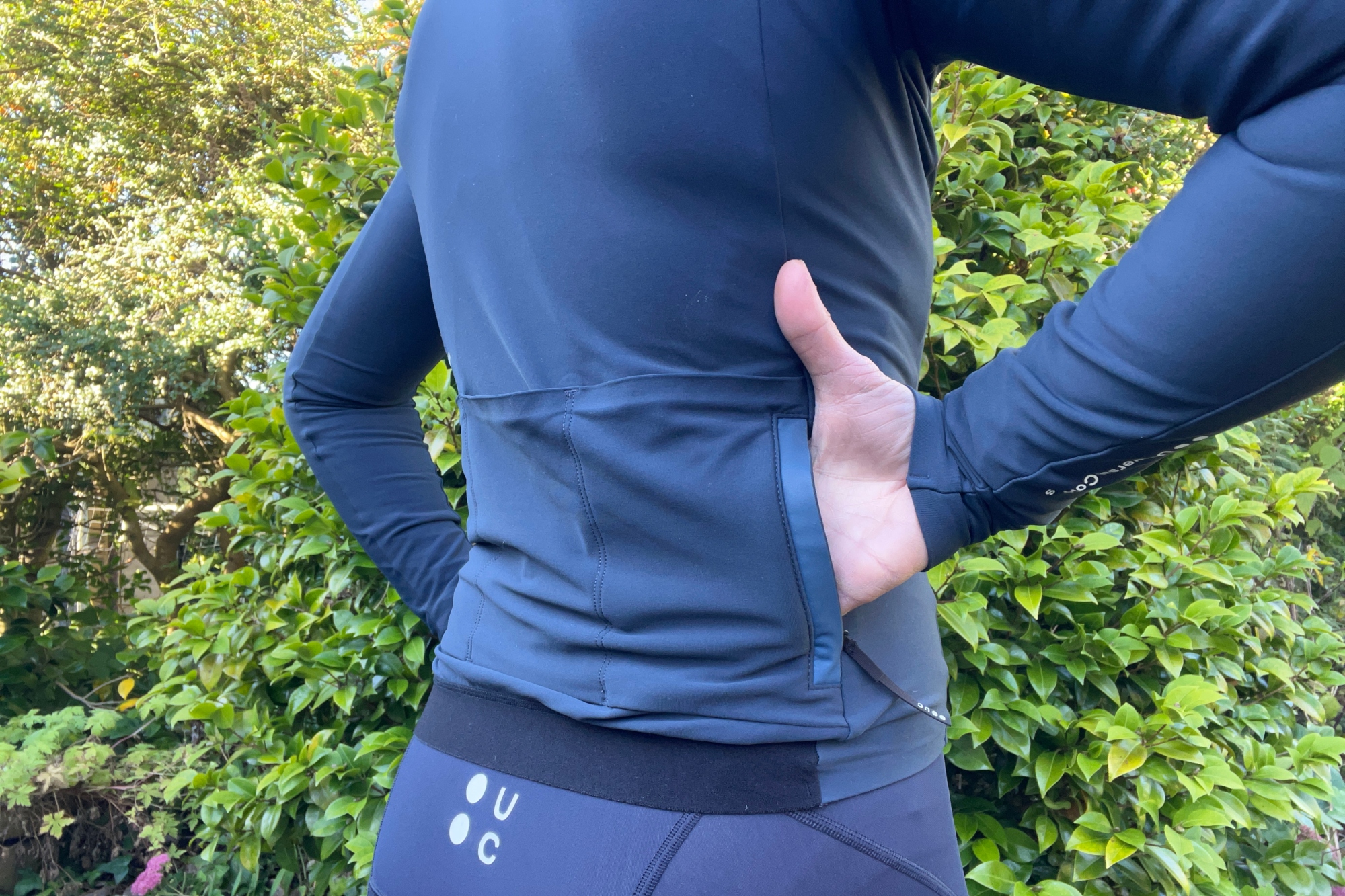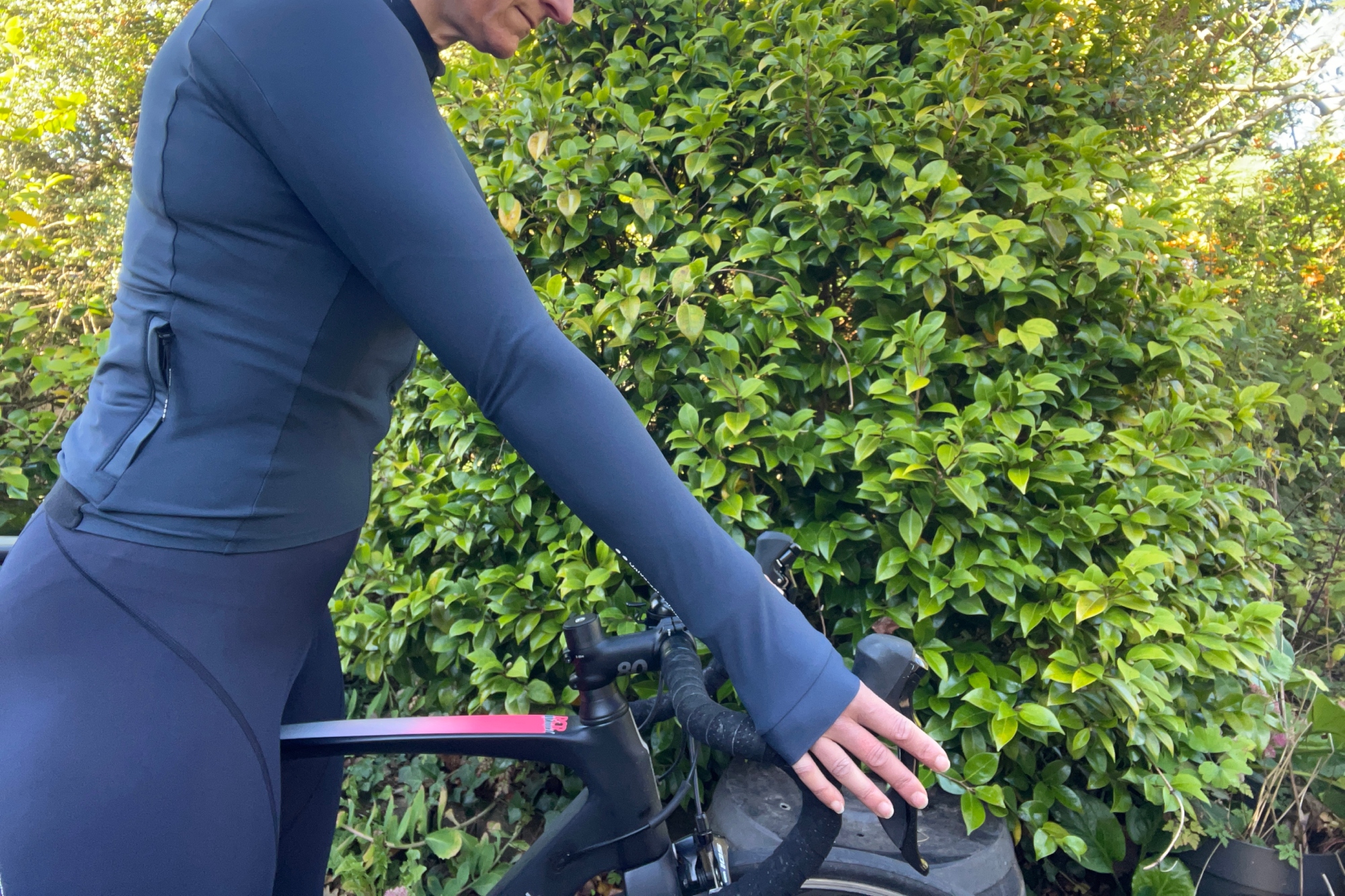In cycling, it often feels like bike clothing is designed for just two weather conditions: sunny and warm, or cold and wet.
However, assuming you live in the Northern Hemisphere, between the heat of summer and the cold temperatures of winter, the shoulder seasons bring all kinds of weather, often within the same day.

(Image credit: Hannah Bussey)
Construction
Made in LTP’s bluesign®-accredited Lithuanian factory, the predominant fabric in the Mono long-sleeved jersey is an 85% recycled nylon and 15% elastane blend. This fabric is known for delivering high stretch, sweat-wicking properties, and a soft, malleable feel.
The Mono features a classic long-sleeved jersey design, with a full-length zip at the front of the side panels to enhance the snug race-cut fit. At the rear, there are three top-opening pockets and one zip-secure waterproof pocket for valuables. There are no bells or whistles here, which in cycling jersey terms often translates into vents, mesh, or extra panels—just the same solid fabric throughout.
In a departure from current fashion, Universal Colours has declined to choose a raw cut finish, instead opting for a bonded hem at the front and silicone elastane at the rear on the torso, with a sewn hem on the cuffs.
Available in XS to XL sizes, in four colors, and in male and female fits. Worth noting here is that I was riding the women’s size small, which hit just 202g on the kitchen scales.
Lightweight options like the Mono are rare, so it’s not surprising that I have no real comparisons in terms of peer jerseys. To give a rough idea, the size medium long-sleeved Rapha Classic jersey weighed 268g—a 66g difference.
The fabric density and feel are closer to that of the Madison Flux short-sleeve jersey, which makes sense since they share the same fabric qualities.
However, there is a downside to the weight savings compared to a more traditional long-sleeved jersey: thermal properties.

(Image credit: Future)
The ride
When a cold snap hit the north of the UK just as I was testing it, I wondered how best to pair the Mono.
Ultimately, I teamed it with a tight-fitting long-sleeve thermal baselayer. I would have struggled to fit anything bulkier underneath; a combination of the tight fit and extreme stretch means it’s a bit of a struggle pulling the extra-long arms on over anything at all.
With no wind protection, even stepping outside to get my bike made me realise that I would require an extra layer, so I pulled on the trusty Santini Alpha Pack Vest before heading out.
I was probably dressed for mile three and a long climb in the Peak District before my arms had warmed up enough at the low single digits of the outside temperature.
Although it would be somewhat unfair to blame Universal Colours for my inability to regulate temperature, it is worth being aware that, despite being a long-sleeved jersey, you’ll need to plan your layers carefully depending on the wind chill.
The jersey’s cut is excellent—no wind flap—and with a short front and lower back, it’s ideal for anyone seeking a race-fit without the over-compression or bulk of a traditional long-sleeve.
The three rear pockets are voluminous enough to hold spares and tools, but thanks to the race cut and small fit, I found it tricky to get items in and out of the rear pocket on the move, and there’s no way my phone would fit in the small zip-secure one, making me appreciate the Alpha Pack vest’s multiple large storage spaces.

(Image credit: Hannah Bussey)
Value and conclusion
I really loved the stripped-back design of the Universal Colours Mono long-sleeved jersey. It would be perfect for late or early-season races, thanks to its fit.
Its ability to be layered up or down means it has the potential to become a super-versatile piece of your cycling wardrobe.
Comparing other long-sleeved jerseys on the market, the Mono price does seem somewhat reasonable.
However, while I appreciate that there are long arms, which add to the manufacturing cost, it really isn’t any more fancy than the much-loved Madison Flux, which is about £100/$134 less.
I appreciate that Universal Colours’ ethical manufacturing decisions may cost more than usual, but until the brand independently evidences and measures what makes it so, its ethical practices remain unclear. And until then, we only have its word for it.
